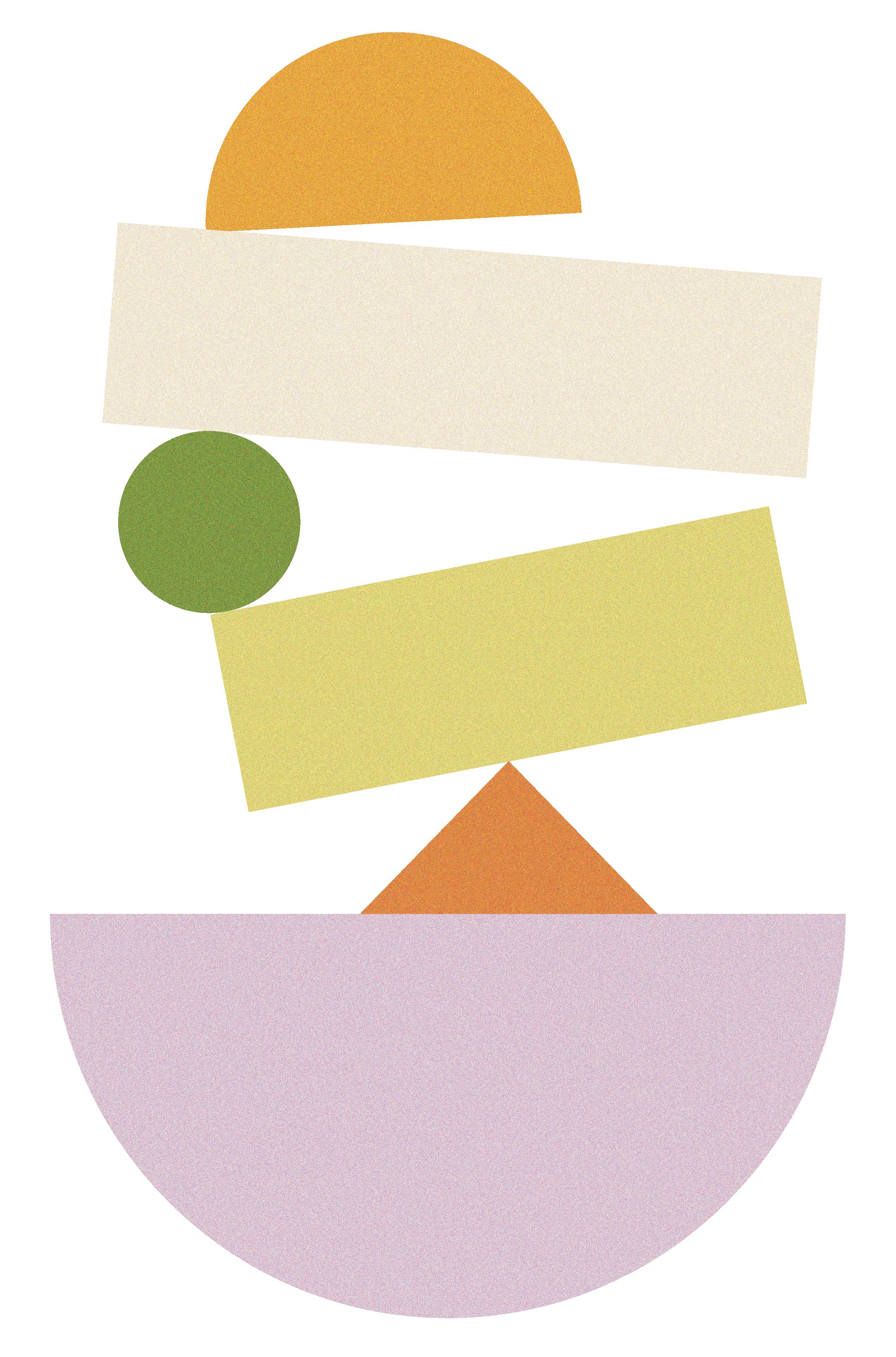HUSTLE THE




SOPHIE CLIFF Positive Psychology Practitioner































Sophie Cliff

PART 1: Reframe Productivity
Chapter 1: Avoid the Productivity Trap
Chapter 2: Identify Your Productivity Archetype
Chapter 3: Define Success on Your Own Terms
Chapter 4: Get the Rest You Need to Thrive
PART 2: Plan and Prioritise Your Way
Chapter 5: Harness Your Unique Energy Cycles
Chapter 6: Trust Your Intuition to Guide Your Decisions
Chapter 7: Play to Your Strengths
Chapter 8: Embrace the Blend & Find Your Flow
PART 3: The Joy Method
Chapter 9: Discover the Joy Method
Chapter 10: Put the Joy Method into Action






























When you’re faced with a big, overwhelming moment, what‘s your default coping strategy? Do you call a friend? Head out for some fresh air? Write in your journal? Or perhaps, like me, you find yourself standing next to the fridge, panic-eating snacks.
I’ve been known to dabble in all these approaches, but my default solution has always been books. Throughout my life—whether navigating a bereavement, a career change, or a new stage of life—other people’s words have been there to guide and comfort me. And whenever a friend is struggling, I always have a book to recommend—you’re much more likely to get a paperback in the post from me than a bouquet of flowers.
So, when I found out I was pregnant in the summer of 2022, it was no surprise that the first thing I did (after staring in disbelief at the test with my husband for at least an hour) was to start adding books to my online shopping basket. But they weren’t baby-related books like What to Expect When You’re Expecting or Expecting Better that I was frantically ordering. No, the first place I turned, upon realising that our lives were about to change forever, was the productivity and time management genre.
When I pictured life with a baby, one question kept running through my mind: How will I manage it all? I’d worked hard to build a successful career that was finally blooming. I was working with dream clients and writing for magazines I’d read since I was a teenager, and I was just about to publish my first book. But I was doing it alone. As a solo business owner, I had nobody else to shoulder the burden, nobody else to pick up the reins while I headed off on maternity leave. And it felt like everybody I shared my news with was so keen to tell me about just how much my life would change and just how little time I’d have once our little one arrived. I’d longed for a baby, but now that I was lucky enough to be expecting one, I couldn’t stop worrying about the logistics of how I’d make it work. My life was already full, and it was about to get even fuller. Something would have to give.
Desperate for answers, I turned to the experts. I devoured every book I could find on productivity and time management: Atomic Habits, Essentialism, Make Time, The 5am Club—all the classics. I binged podcasts promising to help me become my best self, and I followed influencers who swore their tried-andtested routines would save me time and energy. I watched countless YouTube
videos and clicked on every article I could find. I even splurged on a productivity journal that guaranteed to help me get on top of my schedule.
Overnight, I became a scholar in the art of getting things done, poring over every bit of information I could find during those tentative and exhausting early weeks of pregnancy. And while I picked up a few useful tips, two realisations quickly dawned on me. First, these books weren’t written by or for people like me. Most were written by men—in fact, when I’d made my purchases, the only books written by women in Amazon’s Business Time Management Skills chart were about batch cooking . . . really—and the majority of those men appeared to be key players in the corporate or start-up world, with a vast abundance of resources to support them in their quest for productivity. Their advice, while solid, often felt difficult to apply to my life and situation. There was also a glaring absence of content addressing the specific burdens women face. I couldn’t find guidance or tools related to the conversations my friends and I were having about mental load, society’s expectation for women to “have it all,” or the daily fluctuations in our hormones that affect our lives. All those factors significantly impact our productivity levels, but I couldn’t find any resources that acknowledged them.
My second realisation upon reading these books and listening to those podcasts was the pervasive sense of seriousness and heaviness. There was a strong emphasis on willpower, determination, and hustle, or on having a flawless “system” to support productivity. The assumption seemed to be that we could treat our human selves like machines, an idea that clashes with my life’s work, which is rooted in joy and helping people find more of it. The time management and productivity world appears to operate under the accepted notions that the sole objective is to accomplish more and that success is defined by achievement alone. But shouldn’t we focus on doing more of what enriches our lives? This aspect seemed largely unexplored, and I wondered why.
Productivity has been a topic of discussion for centuries, examined from many perspectives—evolutionary biology, technology, morality, and mindfulness, to name a few. Check the list of nonfiction bestsellers in any given week, and there will be at least one book in the time management and productivity genre. Yet, as I discovered, much of the existing literature still feels lacking. Maybe it’s because the landscape has evolved so rapidly in a relatively short time, with more women in the workforce than ever before, technology advancing at breakneck speed, and the pressures we face continuing to mount. Maybe it’s because until relatively recently, we’ve been inviting only one type of person to the conversation on productivity, meaning that a whole chunk of lived experience
is being missed. I couldn’t find myself or the challenges I face reflected in those books I read, and conversations with friends and clients revealed that they felt the same way.
This is a crucial point to consider because the content we consume—whether through reading, listening, or watching—shapes how we perceive ourselves. When we don’t see our realities mirrored in what we consume, we may begin to believe that we’re doing something wrong or need to be fixed in some way. I know this firsthand because it has been my lived experience.
I’ve been reading books like the ones I described earlier since I was a teenager. I remember scouring the personal development shelves at the library, eagerly bringing home my latest finds each week. As I grew older, I filled my own bookshelves with similar titles. Every time I purchase a personal development book, I crack the spine and dive in with gusto, highlighting paragraphs and bookmarking exercises to revisit later. I create plans to help me implement the tips and strategies, convinced that this will be the method or routine that finally enables me to make a change. I start ambitiously, full of energy and optimism. And then, inevitably, I fail. I end up hitting the snooze button because waking up at five a.m. feels like an impossible feat. I spend so much time trying to categorise my to-do lists perfectly that I run out of time to actually accomplish anything off them. I map out a new, seemingly “ideal” routine based on expert advice and throw myself into following it, only to abandon it a few days later when I realise it’s incompatible with my messy, chaotic real life. Each time I’ve tried and failed, I’ve internalised that failure as a reflection of my character. I’ve told myself that I’m too lazy or too weak or too unmotivated. I’ve berated myself for not wanting it enough. I’ve felt ashamed that even with someone providing me with a blueprint, I still couldn’t make a change. Perhaps you’ve had a similar experience.
I don’t know what was different in the summer of 2022. Maybe it was the years of coaching experience under my belt and the knowledge that I wasn’t alone in struggling with this stuff. It could have been that the experiences I was seeking to read about were so obviously lacking. Or perhaps it was the fact that my body was busy growing another human and it no longer felt accurate to label myself as weak or lazy. But as I read those books and failed to find anything that related to my life in their pages, my frustration shifted away from myself. Instead, I grew frustrated with the notion that only a small subset of society is deemed qualified to be productivity experts. I felt frustrated that these books seemed to ignore our inherent humanness—the ebbs and flows of energy, the
curveballs life throws at us, and the reality that sometimes, no matter how hard we try, we can’t rely solely on determination or willpower. I was frustrated by the superficial view of productivity that pervaded the literature, with its heavy emphasis on doing and far less attention given to exploring what we actually want to achieve.
One question kept nagging at me: Why isn’t anybody writing books like this for people like me? For those juggling numerous responsibilities, unlikely to ever perfect a flawless routine? For the ambitious and driven people who refuse to sacrifice their joy? For those who want to get stuff done but don’t have the same level of energy every day? For the people who’ve tried all the gimmicky strategies and are looking for something that will work in their messy, chaotic, imperfect lives?
I searched far and wide for that book but came up empty-handed. So instead, I decided to write it myself.
I want to start by cautioning you that this isn’t your typical productivity book. You won’t find any encouragement to push through and hustle until every item is checked off your to-do list. There won’t be advice on how to multitask more effectively or on which calendar-blocking technique will help you squeeze the most out of your day. I won’t be regurgitating typical productivity mantras like "The choices you make are a vote for the person you want to be" or "You need to work smarter, not harder." In fact, I urge you to actively forget as much of that rhetoric as you can—I know it’s easier said than done, when we’ve been absorbing it both consciously and subconsciously for so long.
Instead, this book aims to help you gain a deeper understanding of yourself. It will guide you in exploring your relationship with productivity and uncovering the origins of your beliefs about getting things done. It will acknowledge your unique circumstances, the pressures you face, and the various responsibilities you’re juggling and allow you to see why perhaps you have struggled with making changes in the past. This book will provide you with the tools you need to define success on your own terms and to clarify what will add more joy to your life, empowering you to feel motivated by your own authentic desires rather than hustling to achieve someone else’s goals. Most importantly, it will help you embrace your strengths, connect with your intuition, and harness your energy in the way that works best for you.
I wholeheartedly believe that the best approach to productivity is to accept that we are all entirely unique individuals. Doesn’t it make more sense to celebrate that uniqueness and use it in your quest to accomplish more rather than to waste your limited energy trying to be someone you’re not? Isn’t it more logical to focus your efforts on the things that will bring more joy to your life instead of burning yourself out trying to keep pace with someone else’s to-do list?
If you’re like me, you’ve probably tried the old way of doing things and found that it didn’t work well for you. It’s time to try a different approach. Let’s abandon the notion that someone else has all the answers and instead start harnessing our own unique brand of magic.
It would also be remiss of me not to be bold in my acknowledgement that this book is written primarily for women, as well as nonbinary people who may experience many of the same challenges. I made this choice because having worked with people of all genders in my coaching practice, it has become clear to me that the load women and nonbinary people carry is significantly different from that of our male counterparts. While we will face many of the same challenges, there are experiences that will be unique to us, including sexism, ageism, and the impact of our biology (whether we choose to have children or not), and the expectations placed on us by society and our communities are often greater. I wanted to create a space for us to acknowledge those experiences and understand how they impact our relationship with productivity and our quest for achievement. My hope is that by focusing specifically on the challenges that women and nonbinary people face, we can start to open up the conversations around productivity in a way that feels more inclusive.
Throughout the book, I share examples of my own lived experiences as well as those of my clients. For that reason, it is also important for me to acknowledge the privilege that I have. I write from the perspective of a white, cis, able-bodied woman, and I know that my experiences and opportunities have been shaped by those privileges. I have strived to make this book as inclusive as possible, but if at any time what I’m writing doesn’t feel true to you and your reality, that’s okay. Whenever I read a personal development book these days, I keep a little mantra in my head: take what’s useful and leave what’s not. Please feel free to borrow that mantra as you delve into these pages.
As you will hear from me many times in the chapters that lie ahead, there is no one right way to do anything in life, only the way that feels right to you. I hope that this book will provide not only new perspectives on the topic of productivity but also tools and exercises that will help you consider your reality and your needs so that you can start to make the changes that feel most joyful and meaningful to you.
This book aims to explore a fresh approach to productivity—one that is more accessible and human-centric. One that not only recognises our unique qualities and quirks but also helps us use them to our advantage. This approach allows us to embrace our flawed, imperfect, and sometimes chaotic selves without feeling guilty or ashamed. Most importantly, it promotes a more intentional, joyful, and impactful way of being productive.
My training in positive psychology has demonstrated that when we embrace our strengths and pursue our goals in a way that aligns with our values, we significantly increase our chances of success. Hundreds of hours spent coaching brilliant individuals have shown me that there is no one-size-fits-all approach to productivity. Moreover, my own personal experiences have proved that when we start to let go of everything we’ve been taught about productivity and time management, we can uncover a far better way of doing things. Throughout this book, I’ll interweave insights from positive psychology, case studies from my clients, and my own lived experiences to help you figure out how to get everything done in a way that works for you.
In Part One, we’ll assess our relationship with productivity and begin to reframe it. We’ll explore the origins of our relentless desire for productivity and examine how the constant pursuit of more affects our joy and well-being. We’ll then define our own versions of success and determine what “enough” looks like for each of us, shunning unhelpful expectations in the process. Additionally, we’ll delve into the role of rest in enhancing productivity, exploring the different ways we can recharge and why they’re so important.
Part Two will focus on the importance of doing things your way, and I’ll equip you with the tools you need to achieve this. We’ll examine our natural energy cycles and explore how we can harness them to boost productivity, focusing on how things like our hormones or sleep preferences can impact us. We’ll also
explore why leveraging your strengths might be the superpower you never knew you had and discover what flow and balance look like for you.
Finally, in Part Three, we’ll dive into The Joy Method—my tried-and-tested model that will help you break free from the rules and prescriptive productivity schedules you’ve encountered before. Instead, you’ll learn to embrace productivity in a way that feels joyful, fulfilling, and meaningful to you. Since this whole book is about making productivity work for you, I’ll also guide you through how to personalise the method to suit your life and priorities.
To help you apply the concepts and ideas shared in this book to your own life, I’ll introduce you to the productivity archetypes in Chapter Two. There are four productivity archetypes—the doer, the perfectionist, the dreamer, and the procrastinator—and they have been developed from my vast experience supporting clients with all sorts of changes and challenges. Once you identify which productivity archetype resonates with you the most, you’ll find personalised tools and suggestions throughout the book that will help you take action, regardless of your style or preference. You’ll also come across recurring breakout sections designed to ensure that you put everything you’ve learnt into practice. The Try This sections will provide practical exercises for you to try, while the Let It Go sections will inspire you to release anything that doesn’t serve your desire for joyful productivity, whether it’s an expectation or an unwanted chore. Finally, the Do It Your Way breakouts will remind you that there’s no one-sizefits-all approach to productivity and planning.
My deepest hope is that by the time you’ve finished this book, you’ll be able to shake off the feeling that you’re falling behind or struggling to keep all the plates spinning. I hope that when you turn the final page, you’ll feel more confident, more optimistic, and more determined to fill your life with joy.
The days of endless hustle are over. It’s time to do things differently.


A couple of months ago, I found myself sitting around a table in a bustling restaurant, eating brunch with some of my oldest friends. We were having a long-overdue catch-up—being scattered across the country means that while our WhatsApp group is always pinging, our in-person get-togethers are far less frequent than any of us would like. As I began to dig into my meal and took in the faces of the people who have witnessed some of the biggest moments of my life, I realised something: in the hour we’d spent together, all we’d talked about was how busy we all were.
These are people whose lives are intricately woven with my own. What I really wanted to know was how their dad was recovering from his surgery or how their daughter was doing at school. I wanted to hear all the details of their most recent trip and ask them what they made of the latest political drama. I wanted to reminisce about the funny stories from our pasts, share in-jokes, and squeeze their hands. I’d waited months to be back in the room with some of my very best people, to catch up on the stuff that was most important to them, to hear their wise and interesting perspectives, and yet it felt like all we’d managed to do was compare to-do lists and talk about how exhausted we all were.
It wasn’t intentional. I don’t think any of us turned up to that brunch date planning to use our precious time together to talk about how busy we all were. We had just become so completely and utterly consumed by the seemingly endless pressures that came with being women in our thirties that we had little energy left over to think or talk about anything else. And so, instead, we talked about how exhausting it is to remain ambitious at work while also keeping track of our children’s social lives and making it to day care pickups on time. We apologised for forgetting one another’s birthdays and vowed to try to get together more in the coming months, before struggling to actually pin down a date in our alreadyjam-packed calendars. We compared ourselves to the peers we’d graduated with and the women our age we followed on social media, wondering out loud how everybody else seemed to somehow be doing it all. We spoke about how difficult it was to make it to the gym these days and how guilty we felt for not taking proper care of ourselves.
We were all so overwhelmed with trying to manage the physical and mental loads we were carrying, so desperate to see if our friends felt the same way and whether they had any tips to help us, that it was hard to cut through the busyness and get to the important stuff. And I think that’s a good metaphor for how many of us feel day to day—like there is so much to organise and achieve and get done that there is simply no room for the stuff that really matters: the stuff that brings us joy.
Discovering what brings us joy and considering why we’re so often lacking in it are two of the most common themes I explore with my clients in my work as The Joyful Coach. During our first session together, clients frequently express their longing for more joy in their lives and their desire for positive change, but they feel overwhelmed and unable to find space for it amidst their countless obligations. They’ve tried various strategies—time blocking, rescheduling, waking up earlier—and have followed all the popular advice, but the elusive balance between managing their responsibilities and having enough time for joy still feels like an impossible equation. I deeply empathise with their struggle because I’ve been there myself. Too many times, I’ve found myself overcommitted, with a jam-packed schedule that leaves little room for the things that truly matter.
This past year, I’ve felt that pressure more acutely than ever. Since becoming a mother, I’ve found my time has never felt more constrained. Despite the immense privilege I have in terms of flexibility as a self-employed person—and the unwavering support of my husband, who takes on more than his fair share of the domestic responsibilities—integrating the care of a whole new person into an already-full life has stretched me more thinly than I could have imagined was possible. The things I cherish most—quality time with my daughter, creating memories with family and friends, spending time in nature—often feel impossible to squeeze in amongst the ever-growing to-do list, the looming deadlines, and the mental load of keeping a little one fed, clothed, and entertained. And I know I’m not alone. Over the course of one week, I had a client tell me that she struggled to enjoy her beautiful beach vacation because she was worried that by taking a break she’d be falling behind with a work project, and another confess that she felt guilty that she couldn’t be fully present for her friends in the way she wanted to because her mind was preoccupied with the operational logistics of running a busy household and holding down a job. It seems like we’re all feeling more overwhelmed than ever, and it’s taking a toll on our joy and happiness.
Since you picked up this book, I imagine that resonated with you. We’ve been sold the idea that productivity is the solution to our problems, that it’s the key to finally managing the never-ending load that we, as women, often carry. We’re
led to believe that joy is waiting for us just beyond a new routine or approach. But what if, in reality, the relentless pursuit of productivity is pulling us further away from our true priorities? What if, by constantly trying to do more and be more and achieve more, we’re actually sacrificing the very things that matter most—our joy, our connections, our well-being? What if by pushing ourselves to meet societal expectations and keep up with our male counterparts, we’re ignoring the things that can help us perform at our best: our own energy cycles and unique strengths? What if, to accomplish our goals while also finding more joy in our lives, we need to approach things differently?
The notion that increasing our productivity will create more time for the things that matter isn’t a novel concept. In 1930, the economist John Maynard Keynes proposed that boredom would be the greatest challenge faced by his grandchildren and great-grandchildren. He predicted that by 2030, our typical workweek will be reduced to just fifteen hours, assuming that as living standards improve and technology advances in labour-saving ways, people will opt to work less and enjoy more leisure time. Essentially, he envisioned a working pattern of a two-day workweek and a five-day weekend, the reverse of what we’ve grown accustomed to. Put simply, he was optimistic that by enhancing our productivity, we’d have more time to spend on the activities we enjoy (1963).
The conditions that Keynes predicted would be necessary for this shift— economic growth, rapid technological advancements, increased global productivity—have all been met or surpassed. Yet we find ourselves feeling more overwhelmed than ever before. Instead of reducing our working hours or carving out more time for rest, our increasingly capitalistic society has necessitated that we use the advances of the past century to cram even more into our schedules. It appears that as our opportunities for productivity have expanded, we’ve simply demanded more of ourselves.
Technology, for instance, may streamline certain work tasks and save us time in other aspects of our lives, but it has also introduced additional pressure to be even more productive. Social media is a prime example of this. How often have you opened Instagram only to be inundated with posts from the people you follow sharing their latest achievements, leaving you feeling like you’re falling behind in some way? This happens to me often—I’ll be happily going about my day, and then, suddenly, I’ll start worrying that I’m not setting ambitious enough
goals for my business, that my home isn’t big enough, or that my fitness routine isn’t as challenging as it should be. As a millennial woman, I find it impossible to open Instagram and not be confronted with an announcement, whether it be related to a pregnancy, a promotion, or some other tick on the having-it-all checklist. This sentiment has been captured by a new term, announcement culture, coined by British entrepreneur and influencer Grace Beverley. In her 2021 book, Working Hard, Hardly Working, she defines announcement culture as “our ever-growing need to announce everything we’re doing, therefore perpetuating our anxiety of having ’things’ to announce in the first place. We judge our success and that of others on the quantity (rather than the quality) of announcements made.” And while technology has definitely created a fertile ground for sharing announcements, I notice that pressure to have something to announce seeping into my conversations with friends too, especially those I don’t get to see very often. When we finally get together, it’s tempting to present our highlight reels to one another, focusing only on the achievements and accolades that make us feel productive and worthy, rather than allowing ourselves to be vulnerable with one another.
The concept of announcement culture appears to be supported by academic research. A 2017 paper by Bellezza, Paharia, and Keinan found that a busy and overworked lifestyle has become a status symbol used to convey importance in much the same way that expensive cars or flashy designer goods do. The authors concluded that being busy creates a perception that a person possesses human capital characteristics, such as competence and ambition, and that these qualities are scarce and in demand. When someone asks us how we are and we reel off a list of our recent accomplishments or the activities filling our schedules (just as my friends and I found ourselves doing at that brunch date), what we’re really trying to convey is that we’re important, successful, and valued by others. When you look at it that way, it’s little wonder that we’re all striving to become more productive and accomplish even more.
But I think there’s more to our pursuit of productivity than a desire for status. There’s no denying that the real pressures and demands placed on women have exploded in recent decades. I notice this a lot when I speak to my own mum about parenting. While I worry about attachment styles and ensuring my daughter is hitting all her milestones on time, my mum frequently reminds me that when she was raising me, parenting didn’t come with the same weight or expectations. There were no books extolling the virtues of different parenting styles, no apps informing you of the different developmental phases your child should be experiencing, and no social media creating a crescendo of comparison.
Women also tend to bear the load when it comes to picking up other family pressures, particularly caring for parents or elder relatives, something that is becoming increasingly common given our ageing population, and often it comes with a whole host of emotional and logistical challenges. You might find yourself part of the sandwich generation earlier than expected, juggling the demands of caring for young children and ageing parents simultaneously. Even if you have siblings, you may discover that the responsibility falls disproportionately on you as the eldest daughter or simply because you are a daughter. Or perhaps you shoulder more of the responsibilities for maintaining familial ties, whether that be shopping for Christmas gifts or arranging trips to visit your in-laws.
Moreover, while there’s always been pressure for women to look a certain way, as the volume of aesthetic treatments and procedures available skyrockets, so, too, does the pressure to maintain a youthful, flawless appearance. If you choose to keep up with the ever-evolving beauty standards (which seem to change faster than ever thanks to social media), you can find yourself dedicating hours of effort and significant expense to your weekly beauty regimen. And while adhering to beauty standards might sound like an endeavour driven by vanity, research shows that how we look can impact our employability. One study, for example, showed that hiring managers were more likely to deem the candidates they found attractive as suitable for a role (Tews, Stafford, and Zhu 2009), and another study found that a woman’s weight could impact her wages by as much as 9 percent (Cawley 2004). The pressure to look a certain way isn’t an indication that we’re all self-absorbed—it’s yet another consequence of our highly capitalistic society.
And while I’m grateful to belong to one of the first generations of women to have complete career autonomy, there’s no denying that trying to stay ambitious while shouldering all these other responsibilities can feel overwhelming. I was told repeatedly that I could be anything I wanted to be when I was growing up, and while this was certainly intended to empower me, I internalised it as a pressure to achieve impressive things and never settle. Achieving our career ambitions can feel even more challenging if we choose to have children and have to factor caring responsibilities and the cost of childcare into our career planning. One survey conducted by the British Chambers of Commerce in 2023 found that two-thirds of women feel like they’ve missed out on career progression as a result of shouldering more of the childcare responsibilities, adding to a sense of frustration and confusion.
Add in hormonal fluctuations that impact our moods and energy levels, and the constant pressure that women face to appear perfect, loving, and compassionate no matter what they’re going through, and you suddenly realise that we’re faced with an impossible task. Society often teaches us to be embarrassed or even ashamed about the very real impact of our hormones, making it even harder to confront this reality head-on. Women are expected to give endlessly to others, even when struggling with stress, social anxiety, or depression, leaving little time and space to explore their emotions, needs, and desires. As a result, we often end up ignoring our own well-being or facing burnout or other related challenges.
We’ve grown up hearing that women can have it all, and we’ve also been sold the belief that we just need to become a little bit more productive to achieve it. But that’s a myth. As the goalposts keep moving further and further away, the expectations of what it means to be content and successful as a woman continue to shift, chipping away at our confidence and self-worth in the process.
The real crux of the matter, the belief that underpins the drive for productivity for so many of us, is the notion that doing, being, and achieving more will somehow make us happier. How many times have you heard someone say “I’ll be happy when . . .”? How many times have you said it yourself? I know I’ve uttered that phrase countless times in my own life. I’ll be happy when I get a new job. I’ll be happy when this project is finished. I’ll be happy when I earn a bit more money. I’ll be happy when I’m feeling fitter. I’ll be happy when my baby sleeps through the night. I’ll be happy when we book that dream trip, buy a new house, or I land an exciting new client.
Yet even when we achieve the thing we’re striving for, it can feel like the happiness we anticipated doesn’t arrive. I’ve had many experiences like this myself. New jobs or promotions were significant ones for me when I was climbing the corporate ladder. There was one job in particular that I worked incredibly hard for, dedicating enormous amounts of time to applications, tasks, and interviews, while missing out on friends’ birthdays and a family get-together in the process. I can still vividly recall the sinking feeling I had a few weeks in when I realised that I still felt just as unhappy, even with a shiny new job title. I had a similar experience with weight loss—I’d long held the belief that being thinner would make me happier, and I spent months running on cold, dark evenings and
— Selina Barker, author of
“The Hustle Cure offers a much-needed alternative to traditional productivity advice—one that finally works for women and addresses the unique challenges and pressures they face each day.”
Burnt Out: the Exhausted Person’s Six-Step Guide to Thriving in a Fast-Paced World
When positive psychology practitioner Sophie Cliff was looking for help balancing her thriving career and growing family, she turned to productivity and time management books. But the productivity guides she found were written for a different audience—by men, for men, in corporate environments—and lacked the nuance needed to address the unique challenges faced by women juggling multiple roles.
Part manifesto, part manual, The Hustle Cure breaks down the conventional productivity myths and offers a refreshing approach that acknowledges our inherent humanness. Drawing from her own experiences and those of her clients, Cliff provides a blueprint for redefining success and managing your time in a way that feels authentic and joyful.
✷ Why traditional productivity methods often fail and how to create a system that works for you
✷ How to explore and harness your natural energy cycles to enhance productivity
✷ Practical tools and exercises to help you define and achieve your personal version of success

✷ Insights into the specific challenges faced by women, with strategies to overcome them
✷ A unique approach to productivity that focuses on doing what brings you joy and fulfillment
✷ How to stop chasing society’s expectations so you can carve your own path to success